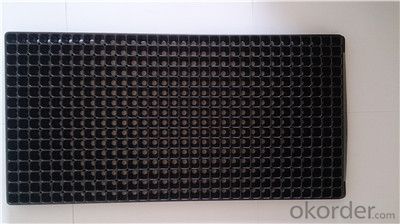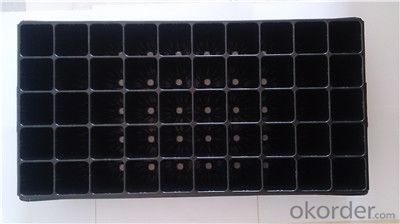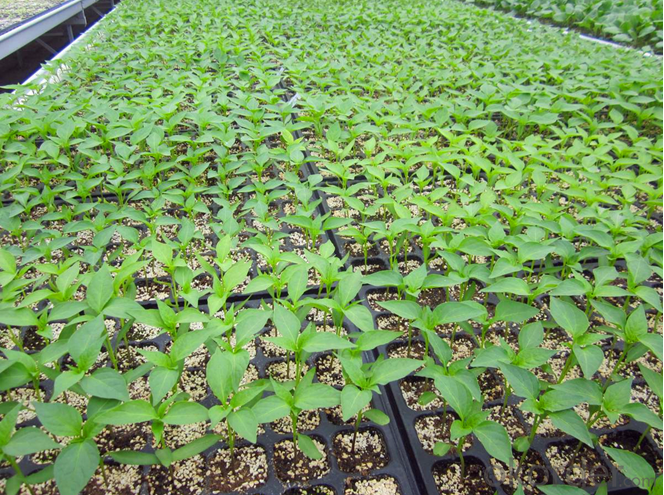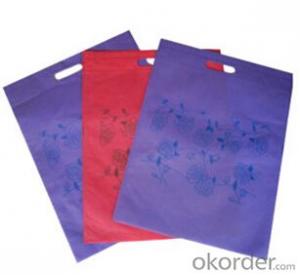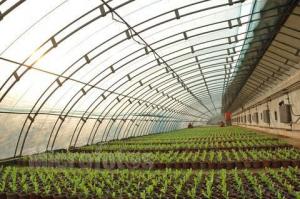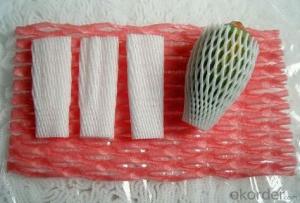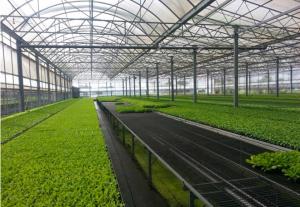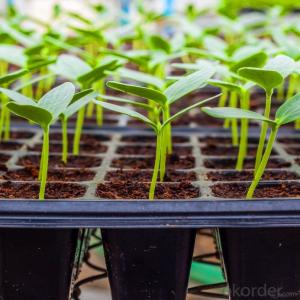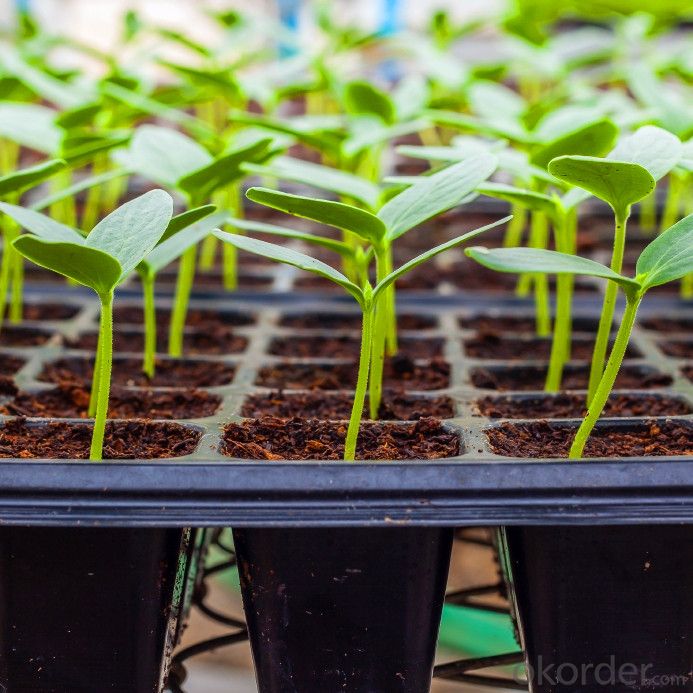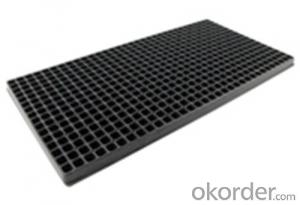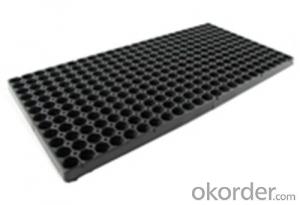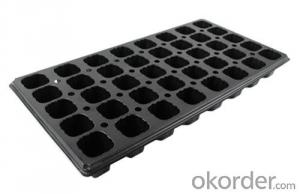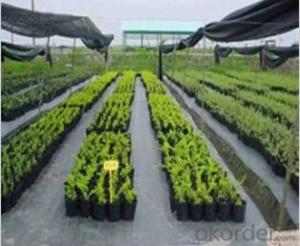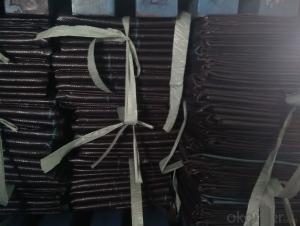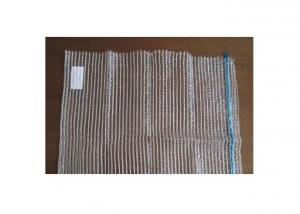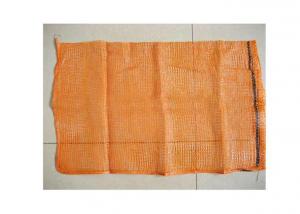Nursery Plug Trays/Plant Seed Plastic Growing Trays Plug Tray
- Loading Port:
- China main port
- Payment Terms:
- TT OR LC
- Min Order Qty:
- 1000 pc
- Supply Capability:
- 10000000 pc/month
OKorder Service Pledge
OKorder Financial Service
You Might Also Like
Structure of the seed tray: · Top quality and competitive price. · Variety design and good appearance. · Easy to use, and remove. · Durable and reusable. · Eco-Friendly.
Advantages: · Top quality and competitive price. · Variety design and good appearance. · Easy to use, and remove. · Durable and reusable. · Eco-Friendly.
Application: · Ideal for Starting seeds and Transplanting Seedling. · Suitable for both manual and automatic planting. · Suitable for Propagating Vegetables, Flowers and other plant from seed · in green-house or indoors.
Description Main Features of the seed tray: · Ideal for Starting seeds and Transplanting Seedling. · Suitable for both manual and automatic planting. · Suitable for Propagating Vegetables, Flowers and other plant from seed in green-house or indoors. Using time: · thickness of 0.5mm can be used 1 to 2 times. · thickness of 0.6mm can be used 3 to 4 times. · thickness of 0.7mm can be used 5 to 6 times. · thickness of 0.8mm can be used 7 to 8 times. · thickness of 0.9mm can be used 8 to 9 times. · thickness of 1.0mm can be used 8 to 10 times. Thickness vs. Weight: · Thickness of trays are from 0.5mm to 1.0mm. · 1.0mm: 155g±5g; 100pcs/ctn. · 0.9mm: 140g±5g; 120pcs/ctn. · 0.7mm: 110g±5g; 150pcs/ctn. · 0.6mm: 95g±5g; 180pcs/ctn. · 0.5mm: 80g±5g; 200pcs/ctn.
Seed Tray Specification: Materialps/pvcThickness0.5mm-1.5mm, standard:1mmWeight80g(±5)g-230g(±5)g, Standard weight:155g(±5)gSizelength:490mm-540mm, width:190mm-345mm,depth:25mm-150mm Standard:54mmX28mmCell count18-512Packagein cartonUsing time8-10 times
FAQ: Q:How Can I Get A Sample? A:You can get samples by communicate with our export sales. Q:How Long Is Delivery? A:Delivery time will be 7-25 days according to order quantity. Q:What Is The MOQ? A:Our MOQ is 1*20FT container quantity, allow to mix several items. Q:What Is Our Normal Payments Terms? A:Our normal payment terms now is T/T, L/C or Western Union,Papal. Q:How Do I Order Your Products? A:You can check our website for any items you interest and you can also get communication with our export sales and order for it accordingly. Q:What Kinds Of Material We Use In Our Product? A:Our plastic flower pots use material such as PP polymer or PE polymer.
|
- Q: Can ground cover be used to attract pollinators and beneficial insects?
- Yes, ground cover can be used to attract pollinators and beneficial insects. Ground cover plants such as clover, thyme, and sedum provide food sources and shelter for butterflies, bees, and other beneficial insects. These plants also offer a diverse and accessible habitat for pollinators, which can help increase their populations and improve overall ecosystem health.
- Q: Do nursery trays come with lids?
- Yes, nursery trays typically come with lids to create a controlled environment for seedlings and young plants.
- Q: What are the different types of agricultural plastic greenhouse films?
- There are several types of agricultural plastic greenhouse films available, including polyethylene (PE) films, ethyl vinyl acetate (EVA) films, polyvinyl chloride (PVC) films, and polypropylene (PP) films. Each type has its own unique properties and advantages, such as UV resistance, light transmission, insulation properties, and durability, which make them suitable for different applications in greenhouse farming.
- Q: How do you choose ground cover that tolerates cold winters and freezing temperatures?
- When selecting ground cover that can withstand cold winters and freezing temperatures, it is important to consider a few key factors. First, choose plants that are specifically labeled as cold-hardy or frost-tolerant. These varieties are bred to endure colder climates. Additionally, look for ground cover that is native to your region, as these plants are often naturally adapted to local weather conditions. It is also helpful to research the hardiness zones of the plants you are considering and match them with your specific zone. Finally, consider the soil type and drainage in your area, as some ground covers may prefer sandy or well-drained soil, while others thrive in heavy or moist soil. By considering these factors, you can choose ground cover that is well-suited to your cold winters and freezing temperatures.
- Q: What are the different types of plastic trays used in agriculture?
- There are various types of plastic trays used in agriculture, including seedling trays, propagation trays, nursery trays, and grow-out trays. These trays are designed to provide a suitable environment for seed germination, plant propagation, and growth, while also offering convenience in handling and transportation.
- Q: What are some ground cover options for a Mediterranean courtyard?
- Some ground cover options for a Mediterranean courtyard may include creeping thyme, rosemary, lavender, sedum, and creeping juniper. These plants are well-suited for the Mediterranean climate, as they can tolerate hot and dry conditions while providing beautiful foliage and aroma.
- Q: This question asks whether the use of plastic products in agriculture can lead to soil erosion.
- <p>Yes, agricultural plastic products can contribute to soil erosion. The improper disposal and degradation of plastic mulch films, for instance, can lead to the formation of microplastics that disrupt soil structure and reduce water infiltration, thereby increasing runoff and erosion. Additionally, the use of plastic in agriculture without proper management can lead to the contamination of soil with plastic residues, which may affect soil fertility and the overall health of the ecosystem, indirectly exacerbating soil erosion.</p>
- Q: How do you propagate ground cover plants?
- Ground cover plants can be propagated through various methods such as division, stem cuttings, layering, and seed sowing. Division involves separating clumps of the plant into smaller sections and replanting them. Stem cuttings can be taken from healthy plants and rooted in a suitable growing medium. Layering involves bending a low-growing stem of the plant to the ground, covering it with soil, and allowing it to grow roots before separating it from the parent plant. Lastly, some ground cover plants can be propagated from seeds, which need to be sown in a seed tray or directly in the ground and cared for until they germinate and grow into new plants.
- Q: What are the best ground cover plants for sandy soil?
- Some of the best ground cover plants for sandy soil include creeping juniper, creeping phlox, beach sage, bearberry, and dune grass. These plants are well-adapted to sandy conditions, with their ability to withstand drought and thrive in poor soil.
- Q: What are the different types of agricultural plastic pipes?
- There are several types of agricultural plastic pipes used in farming, including polyvinyl chloride (PVC) pipes, high-density polyethylene (HDPE) pipes, polyethylene (PE) pipes, and polypropylene (PP) pipes. Each type of pipe has its own unique characteristics and is used for different purposes in agricultural irrigation and drainage systems.
Send your message to us
Nursery Plug Trays/Plant Seed Plastic Growing Trays Plug Tray
- Loading Port:
- China main port
- Payment Terms:
- TT OR LC
- Min Order Qty:
- 1000 pc
- Supply Capability:
- 10000000 pc/month
OKorder Service Pledge
OKorder Financial Service
Similar products
Hot products
Hot Searches
Related keywords




